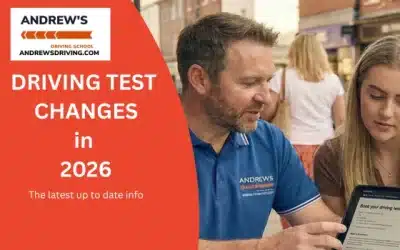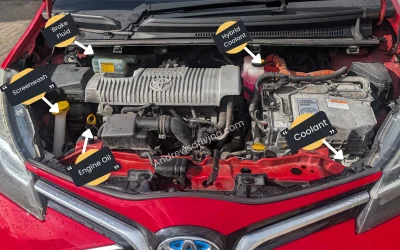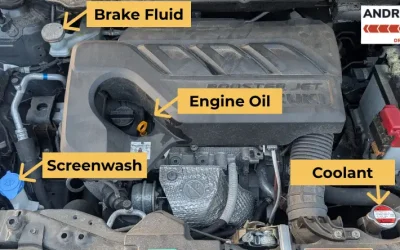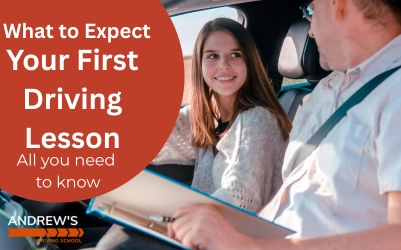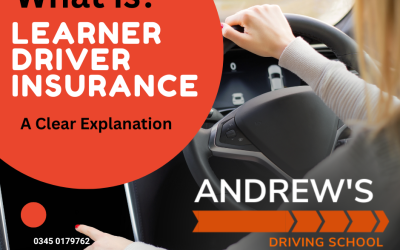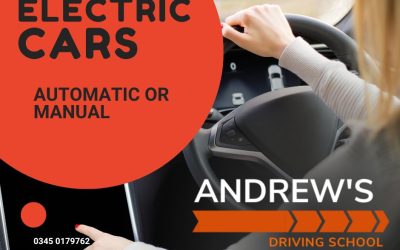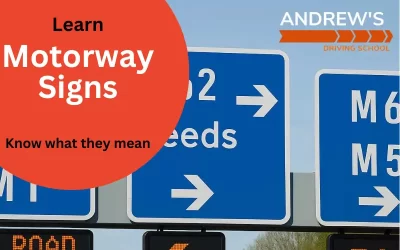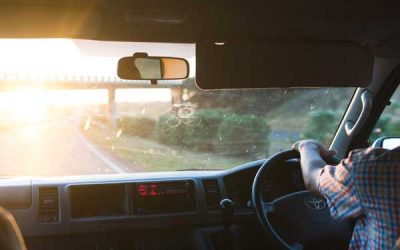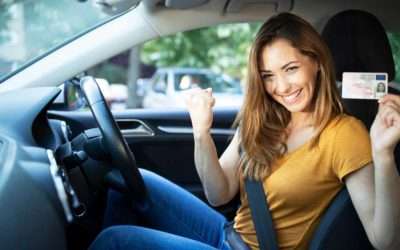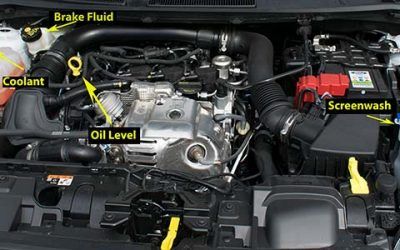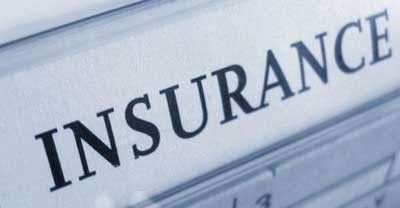Ice, Snow, And Low Visibility: What You Need To Know About Driving In Winter
Driving can be hazardous at the best of times but winter is especially bad.
Conditions are often poor, making it harder to keep your vehicle on the road, see other drivers and keep your distance.
Ice, snow and low visibility are three of the most common issues of winter driving but they aren’t the only ones you need to know about.
We’ve explained the key problems you can face on the roads in winter and highlighted what you can do to tackle them.

Ice and snow
Ice and snow is one of the top causes of accidents on the roads during winter, with some legal firms suggesting it may even be the number one hazard for drivers during the holiday season.
It doesn’t take much effort to see why ice and snow is such an issue. Vehicle tyres need steady and consistent ground to be able to move properly and these two things make roads slippery and wild.
There are a couple of things you can do to mitigate the threat that comes from ice and snow.
Firstly, you can drive in a higher gear than you would normally do at specific speeds. This makes it more difficult for your tyres to spin and lose traction, as your engine will operate below its peak torque level.
Secondly, you can invest in winter tyres. These have deeper grooves and a softer compound, improving the traction and grip when driving on ice and snow.
So, if you’re driving on roads affected by ice and snow, take the proper precautions to make sure you can drive safely.
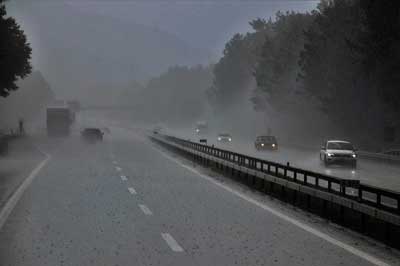
Low visibility
Visibility is vital to using a vehicle. It’s part of your driving test and with good reason — if you can’t see properly then you may drive into something or someone, causing a (potentially) fatal accident. This is why low visibility is such a problem during winter.
Winter causes low visibility because it creates radiation fog. This happens when the earth cools at night, leading to cold air at the surface being cooled by thermal radiation. This leads to condensation and winter fog.
Fog is a huge problem for drivers because it cuts down their ability to plan ahead, meaning they brake later than they should due to being unable to see an obstruction as early as they normally would.
The simple solution to the low visibility that comes naturally during winter is to make sure your fog lights are in good condition.
You can do this yourself by carrying out an eye test. However, it’s a good idea to get a mechanic to look at your lights, as they’ll be in a better position to advise if there’s a safety issue and to install new ones — if this is necessary.
Strong winds
Chilly air is one of the most recognisable parts of winter, alongside frost, snow and ice. But the low temperature doesn’t just cause people to invest in a warm coat, it also leads to stronger winds and this can be dangerous when you’re driving.
Wind strength increases during winter because of the uneven heating of the earth’s surface. This leads to higher temperature gradients, the result of which is stronger winds.
There are two main reasons why faster winds are a driving hazard.
The first is that it can blow objects into your lane, such as knocking over trees. The second is that it can push your vehicle, causing you to lose control and shift from your lane into another.
It’s difficult to fight against winter winds. Naturally, the larger your vehicle the lower the risk of it being affected by a gale. But not everyone can upgrade their vehicle for a bigger one during the winter seasons.
One thing you can do to reduce the threat of strong winds is to lower your speed. This gives you more time to anticipate problems, so you can react to them quicker and take the appropriate action to stop them from becoming an issue.
Promoting safe driving in winter (and all other times)
Regardless of weather, bad driving is the biggest cause of accidents.
There are so many ways people can drive badly, such as getting behind the wheel when you’re tired or stepping into a new vehicle and not giving yourself the time to adjust to it.
However, the three main causes of bad driving are harsh braking, taking corners too sharply, and speeding. All of these things increase your chances of having an accident, particularly during winter months.
Tracking is an ideal way to promote safer driving and you can do this by getting a telematics device installed in your vehicle. This is software that records driver performance data, showing you if you’re driving too quickly, taking corners too sharply or braking too harshly.
There are a couple of ways to do this.
Firstly, if you’re driving your own vehicle you can have a black box installed as part of your insurance package. Not only does this allow you to see where you can make improvements to your driving but it can also reduce your premiums, as it allows your insurance provider to see how safely your vehicles are being driven.
Secondly, if you’re driving a work vehicle, some fuel cards provided by employers include the integration of a telematics device. Providing access to analytics that show driver performance and fuel usage, it records how you drive and gives you and your boss the data you need to see if you can take steps to be a safer driver, something that could save not just your life but the lives of others too — during winter, spring, summer, and autumn.
Ice, snow, low visibility, and strong winds are some of the biggest causes of accidents during winter, with each making it harder to drive. But the biggest issue is an all weather problem.
Whatever the conditions, there’s simply no substitute for driving safely.
This doesn’t mean monitoring how quickly you drive, how sharply you take corners, and how harshly you brake removes the need to take the steps we’ve outlined to deal with ice, snow, low visibility and strong winds. Far from it.
But if you keep an eye on how you’re driving, take the necessary steps to be a safer driver and combine this with the other advice we’ve given you then you’ll be much less likely to have an accident.
How Will the 2026 Booking Changes Affect Your Driving Test?
Big Changes Coming to The Driving Test Booking System – What Learners Need to Know for 2026A fairer, safer way to book your test is on the horizon. Here’s how the new DVSA rules will put control back in your hands. .The Announcement: A Major Shake-Up for Learner...
When Can I Rebook My Driving Test After Failing?
When Can I Rebook My Driving Test After Failing? And the top 10 reasons for failing a driving testThe 10-Working Day Rule and Rebooking Times If you’ve just found out that you didn’t pass your practical driving test, it’s completely normal to feel disappointed — but...
What is a Smart Motorway
Learn what a smart motorway is, how it works, and the key rules every new driver should know — from red X signs to variable speed limits and safe breakdown tips.
Toyota-Yaris-1.5-hybrid-engine-diagram
This Toyota Yaris Hybrid engine diagram helps learner drivers prepare for “Show Me, Tell Me” questions in the driving test. It highlights the brake fluid, engine coolant, hybrid inverter coolant, oil dipstick, and screen wash locations, plus a key safety note on orange high-voltage wiring.
Suzuki Swift Booster Jet Hybrid Engine Diagram
This Suzuki Swift Hybrid engine diagram helps learner drivers quickly identify key under-bonnet components for their ‘Show Me, Tell Me’ test.
First Driving Lesson
First Driving Lesson What to Expect and How to PrepareWhat to Expect on Your First Driving Lesson – Expert Tips from Andrew’s Driving School Your first driving lesson marks the beginning of your journey to independence — and it’s perfectly normal to feel a little...
What is learner insurance?
What is Learner Insurance ? How to insure your car as a learner and some money saving ideasGetting Ready to Hit the Road? Make Sure You’re Covered with Learner Driver Insurance Before you start practising outside of lessons, it’s essential to have the right learner...
Are Electric Cars Automatic or Manual?
Are electric cars Automatic or Manual?Electric cars differ from traditional cars but are electric cars automatic or manual? Driving an electric car is a different experience to driving either a petrol or diesel car. It is also different from what we know as automatic...
Should I Learn Automatic or Manual
Choosing to learn to drive automatic or manual, read about the advantages and disadvantages of both to help make an informed choice
Motorway Signs Driving Theory
Motorway signs explained in plain english, know the meanings of those signs with a blue
When to Use Fog lights
When to use fog lights and what The Highway Code and Law says about when to use fog lights As autumn and winter roll in, you might find yourself using your fog lights a bit more often than usual, so let's chat about what the law really says about them and figure out...
Driving Test Faults Explained Major, Minor What makes a fail.
Driving Test Faults Explained, what makes minor or major, and how many faults can you accrue on your driving test
Summer driving tipsdrivi
Great tips and advice for summer driving, from staying hydrated to keeping your windscreen clear. Stay safe on the roads this summer with our top tips.
How to pass your driving test first time
If you have a driving test coming up read our top tips to help you pass the driving test first time. Also driving test marking sheet explained. What to expect on test day? What car will I use for my driving test? How many minors can i get on my test? Answers to all of these questions.
How Many Driving Lessons do I Need?
How many lessons do I need, find out the average amount of driving lessons needed to pass your driving test.
Learner Drivers on Motorway
Learner drivers are now allowed to have driving lessons on Motorways. This new ruling came into force on 4th June 2018.
Extended driving test
What you need to know if you need to take an extended driving test. If you have been ordered by a court to take an extended test we have information to help you to get your license back.
Find a good driving instructor
Find a good driving instructor
Learning to drive with parents
A few guidelines to help you with private driving practice.
Why You Need Breakdown Cover
Breakdown cover is essential if travelling far from home or on motorways, read our guide explaining different types of cover available.
Ford Focus tdci 1.5 diesel Engine Diagram
Ford Focus 1.5 tdci diesel engine clearly labelled for the show me tell me questions which are asked on the driving test
Hyundai i20 engine labelled for show me tell me questions
Clearly marked diagram of Hyundai i20, labelled for show me tell me questions.
Best cars for new drivers
What makes the best first car for new drivers? Read our guide to help find your first car.
Quick guide to new driving test
Changes to the driving test read here about what is changing.
Ford Fiesta Engine EcoBoost 1.0
Labelled photo of Ford Fiesta eco boost engine, showing where all items asked on driving test are located.
Stopping Distances Easy Way to Remember Theory Test & Highway Code
Stopping distances as quoted in the Highway Code. Easy way to remember. Typical stopping distances and an easy to remember formula.
Tyre Tread Depth
How to check your cars tyres are safe and legal.
New Driver Insurance
New Driver insurance can be expensive, find out how to reduce the cost.

